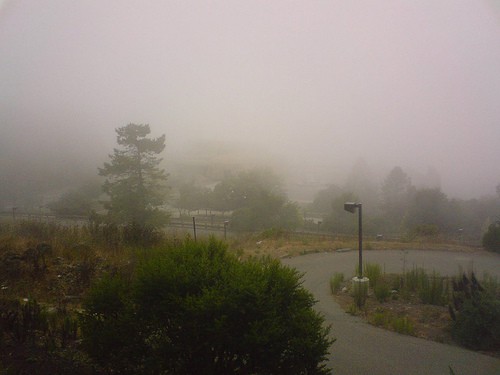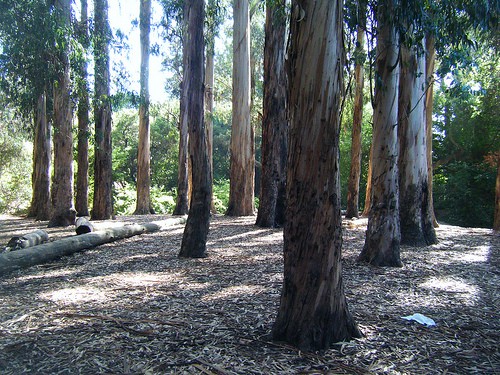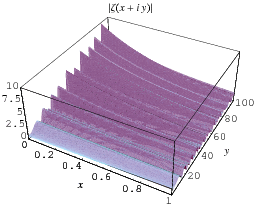
Battling the Beast
A couple weeks ago, I made a brief visit to Berkeley, California, for a wedding. My wife, Julie, had to take a conference call the first morning after we arrived, so I decided to get some work done myself. I didn’t bring a computer, so “work” couldn’t mean e-mail replying (the standard instinct in this situation).
Instead, I decided to log some hard focus hours on what I like to call The Beast: a particularly vexing theory problem that my collaborators and I have been battling for many months.
I got some coffee and headed toward the Berkeley campus on foot. It was early, and the fog was just starting its march down the Berkeley hills (as shown above).
I eventually wandered into a eucalyptus grove:

Once there, I sipped my coffee and thought.
Our existing strategy for The Beast included a complicated algorithm which none of us looked forward to analyzing. Deploying a trick I learned while a grad student, I avoided needing to understand why the complicated algorithm worked by instead turning my attention to understanding why simpler strategies failed (I’m surprised by how often the study of things that break lead to simple things that don’t).
After only an hour, which included a strategic fill-up at the Free Speech Cafe, I had an idea for a more concise (and easier to analyze) algorithm that seemed to work.


